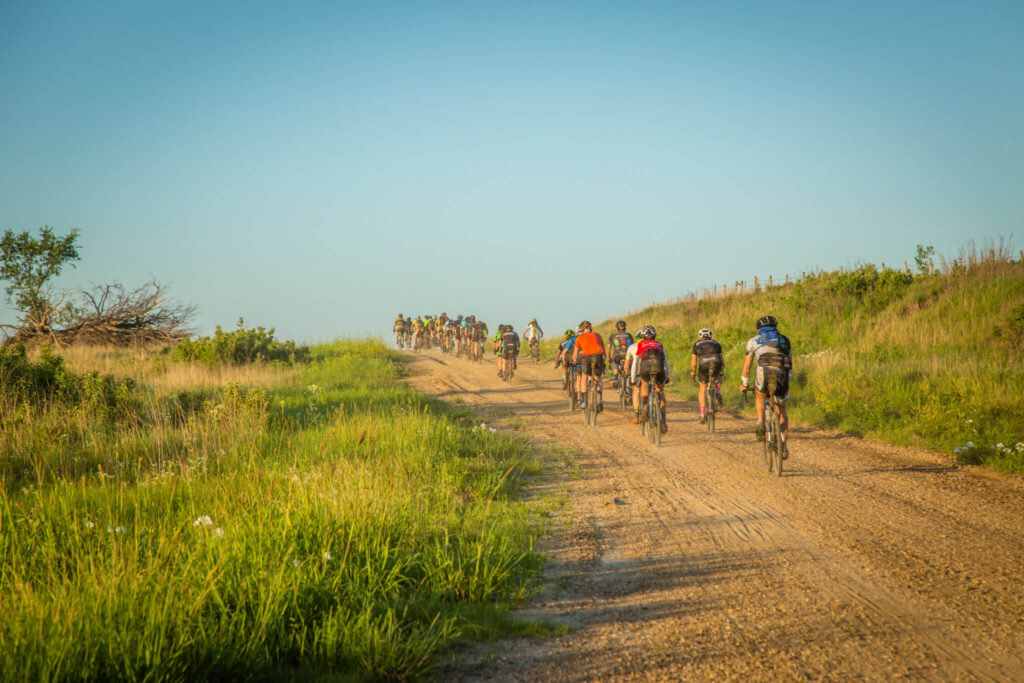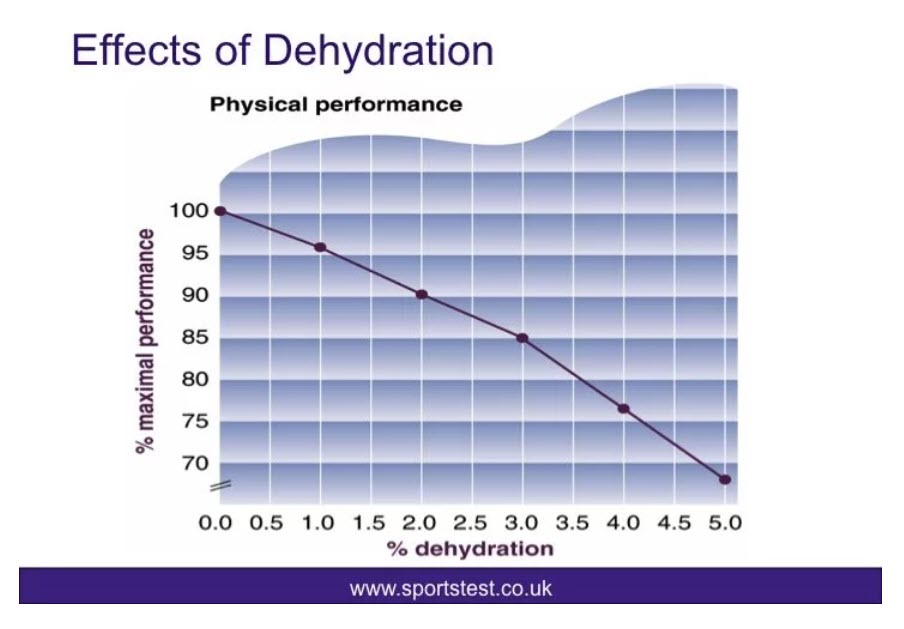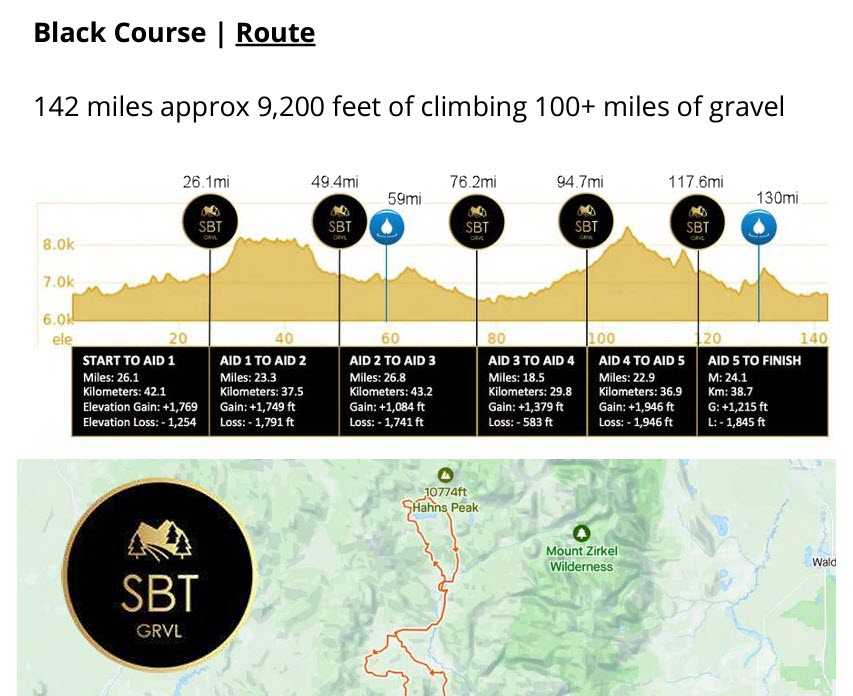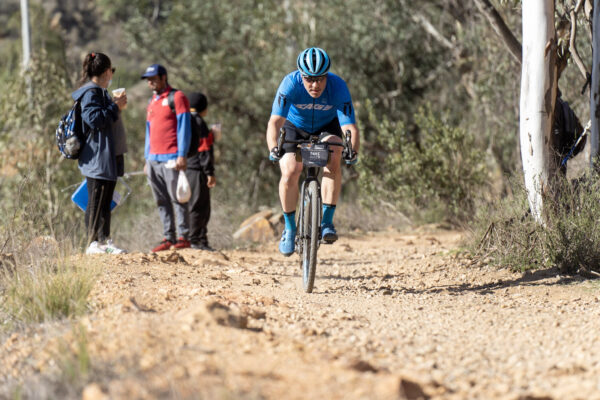Gravel Aid Station Strategy for Racing: Interwoven Variables
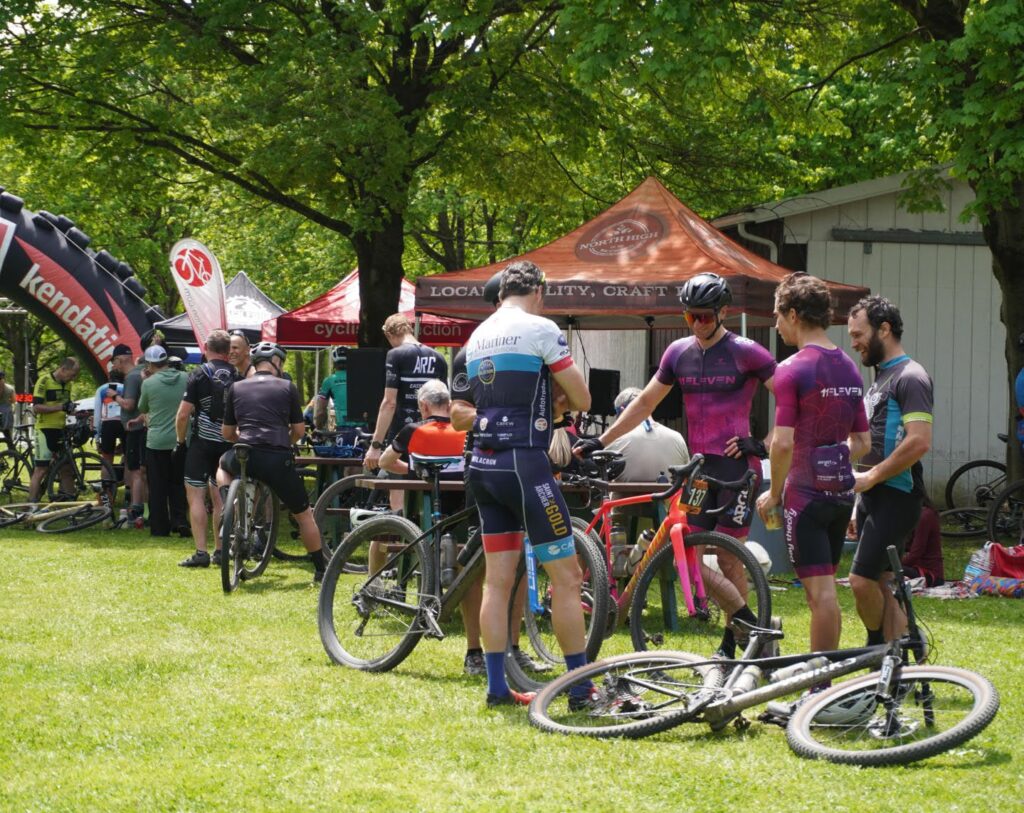
Dehydration was a leading cause for athletes to DNF gravel events. Many of the marquee races at these events are firmly in the “ultra-endurance” category as defined by literature. We also mention that adaptations need to be made to hydration strategies. But what exactly are those adaptations and how do we devise a gravel aid station strategy?
Such questions are more of an inquiry into the interweaving of aid station strategy, hydration strategy and pacing strategy. Read on if you’re curious about how this works.
Meet “Ned” and Our Assumptions
Ned is our example for this example gravel aid station strategy. He is an 80kg male who is heat acclimated. Ned is devising a strategy for the Black Course of SBT GRVL. Ned trains a lot and is 100% ready for this event but we’re still assuming he’s a mortal human that has limitations. We’re also assuming a warm/ hot sunny day. We will also assume that all of Neds fluids will be consumed whenever he stops.
How Dehydrated Can I Get Before Suffering Huge Performance Loss?
As we discussed before, a 2% loss of body weight to dehydration will result in ~5% loss in performance while a 5% loss of weight will yield a 30% drop in performance. Let’s assume 3% is Ned’s acceptable limit. Ned can lose 2.4 kg of water before reaching that 3% limit.
Sweat Rate
This simple survey isn’t hard to do but it’s always surprising how many athletes simply don’t have the answer to the simple question, “how much do you sweat per hour?” Obviously you’ll sweat more during a tough ride than a recovery day so pick a medium day and a hard day to do the test. It’s best to do the test 3-5 times so you have a good baseline of data.
Sweat Test
Please understand that this is only an approximation. The idea is to get a general idea of your sweat rate.
- Weigh yourself, nude, just before you ride.
- Record how much you urinate during the ride. Best guess.
- Record how much you drink during the ride. You should know how much fluid your bottles hold. If not, figure that out.
- Weigh yourself, nude, at the end of the ride.
- Math: Pre-ride weight + fluids consumed- fluid urinated- post ride weight.
- Gives you total weight difference.
- Divide that weight difference by ride time.
- Minimum stoppage time on these rides.
- Now you have fluid lost per hour!
This is the amount you’ll have to drink to maintain your beginning level of hydration.
Ned’s sweat rate is 1 L/hr when he’s riding “medium” and 2 L/hr when he’s riding “hard.”
Example for Gravel Aid Station Strategy
- Find the course- This works really well if the course doesn’t change. Using SBT GRVL we can find a gravel pro like Alexey Vermeulen’s Strava file for lots of precise information. This step is much more tricky and involves best estimates for dynamic courses that change every year.
- Find the aid stations and the time between each aid station. See the picture below for mileage details.
- Estimate your transit time between aid stations. Using Alexey’s times +20% for a highly fit amateur rider such as Ned.
- Aid 1 at 1:20
- Aid 2 at 2:30 (1:10)
- Water 1 at 2:59 (0:29)
- Aid 3 at 3:45 (0:56)
- Aid 4 at 4:48 (1:03)
- Aid 5 at 6:06 (1:18)
- Last water at 6:48 (0:42)
- Finish at 7:16 (0:28)
Applied Example
- Gravel races start hard and fast and tend to stay that way until the field breaks under the strain of its own effort. This tends to happen close to the 2:30- 3:00 mark. Ned is racing for his best result so he’ll ride “hard” to that point, losing 2.0L per hour until Water 1. But that’s a hard decision… Skip Aid 1 and Aid 2? He goes for it.
- Water 1 is at ~3 hours. He’ll lose up to 6 L of fluids by the time he hits Water 1. To keep himself below 2.4L loss he’ll need to consume ~3.6L of fluids. That’s nearly a gallon. It’s a lot.
- I believe that many gravel competitors stretch their first water refill too far, anticipating the cost of losing the group. But it’s a false choice. You need to have the proper amount of fluids on board or your performance will crater and health becomes the focus.
- If Ned’s first stop is at Water 1 and fills his two bottles totalling 1.4L (2x 24 oz bottles) along with his 2L hydration pack. He’s still down 2.6L but he continues at a “medium” pace. From this point on Ned will progress beyond his 2.4L dehydration limit and the “medium” pace is now relatively “hard.” This is the first major logistical mistake he’s made and his performance will likely spiral downward for the remainder of the day. Ned will spend over 3 of the next 4 hours in a severely dehydrated state.
DO OVER
- Ned should stop at Aid 2. He’s lost 5L by now and with his 3.4L intake he’s only down 1.6L. He refills his 3.4L of fluids and continues. His next stop will be at Aid 4 if he rides “medium.”
- Aid 4 for is 2:18 down the road and Ned has consumed his fluids so he should be short ~450ml by the time he pulls up to refill water.
- With a complete refill of 3.4L at Aid 4 and riding “medium” Ned is able to finish the day without stopping again for fluids.
- In total, Ned consumes 10.2 L of fluids during this exercise. He’s not severely dehydrated and he made the minimum number of stops that will keep him out of the +3% dehydrated danger zone. Overall, this strategy could get him down the road the fastest.
Epilogue
Obviously this example is oversimplified and we didn’t even discuss things like heat exposure or nutrition. Nor did we drill into any dynamics due to pacing or elevation. All of those things greatly impact your gravel aid station strategy and the goal is to consider your sweat rate, hydration and pacing as interwoven and dependent on each other. Once you become proficient at this skill you’ll be ready to take on your next ultra-endurance gravel race and give it a good rip!
About the Author:
Adam Mills has raced at the elite level since 2002 and graduated with a Masters Degree in Exercise Physiology from the University of Kansas in 2005. His true talent comes with his ability to combine his vast experience with his knowledge of sport. He is indeed a student of science, sport, athletic performance, strategy, and tactics. He continuously educates himself by keeping up to date with current research trends and methods in sport and his clients have reaped the benefits from this work with over 25 national championships in 11 disciplines on two continents. Adam is able to incorporate these attributes on a daily basis to help his clients reach and exceed their goals whether they are a beginner or a seasoned professional. Learn more about Adam and Source Endurance here.

